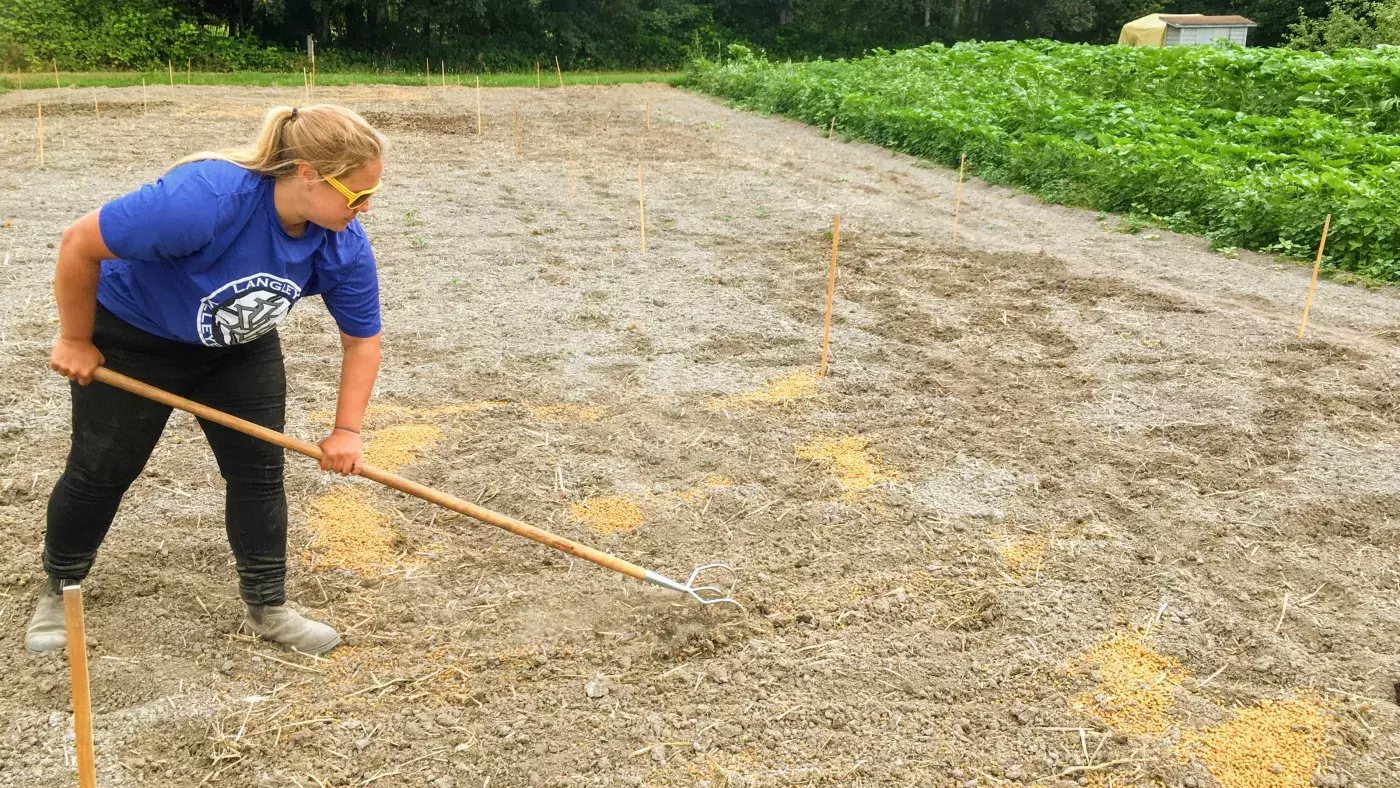

Sustainable Agriculture Student Research Project
Mustard seed meal, black soldier fly frass, spent mushroom manure compost, and Metarhizium brunneum for wireworm management in Hakurei turnipsChelsea Allison, Department of Sustainable Agriculture and Food Systems, 2021 |
Introduction
- Wireworms are the soil-dwelling larvae of click beetles that damage a wide range of crops by feeding below ground
- Wireworms’ long lifecycle (2-5 years as larvae) makes them difficult to manage
- Few management tools are available to organic growers, but some efficacy has been previously reported for each of the treatments tested in this study
Methods
- Randomized complete block design with 40 plots (2.5 x 3.6 m each):
- 5 treatments:
- Untreated control;
- Metarhizium brunneum (Kabaluk, AAFC Agassiz) applied two weeks before planting in 10 cm deep trenches, spaced 50 cm apart at 47 g/plot with 74 g/plot of rolled oats;
- Black soldier fly frass (Enterra Feed Corp. Maple Ridge, BC) spread evenly over the soil surface at 0.9 kg/plot and incorporated by raking immediately before seeding;
- Spent mushroom compost (Highline Mushrooms, Langley, BC) spread evenly over the soil surface at 54 kg/plot and incorporated by raking immediately before seeding; and
- Defatted mustard seed meal (Pescadero Gold, Farm Fuel, Freedom, California) spread evenly over the soil surface at 11.5 kg/plot two weeks before seeding, and incorporated by raking
- 2 turnip planting dates:
- Early - July 9, reseeded August 6
- Late - August 20
- 4 replicate blocks
- 5 treatments:
- M. brunneum and defatted mustard seed meal were applied two weeks before seeding turnips; black soldier fly frass and spent mushroom compost were applied at seeding
- Potato traps were set in each plot one month after second seeding
- Proportion of damaged turnips was recorded at harvest on October 11
- Potato traps were retrieved on October 23 and feeding holes were counted
Image
Figure 1. June 25 application of M. brunneum and rolled oats in 10 cm deep trenches, spaced 50 apart. Trenches were re-filled to bury the fungus after application.
Results
Image
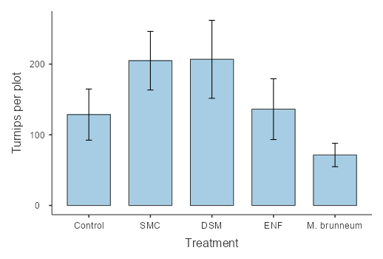
Figure 2. Turnips per plot by soil amendment. Soil amendments were an untreated control, spent mushroom compost (SMC), defatted mustard seed meal (DSM), black soldier fly frass (ENF), and M. brunneum. Error bars denote standard error of each mean.
Image
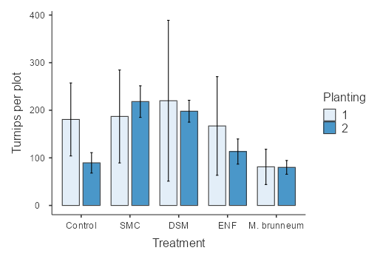
Figure 3. Turnips per plot by soil amendment and planting date. Soil amendments were an untreated control, spent mushroom compost (SMC), defatted mustard seed meal (DSM), black soldier fly frass (ENF), and M. brunneum. Planting dates were 1) July 9, reseeded August 6; and 2) August 20. Turnips were harvested on October 11. Error bars denote standard error of each mean.
Image

Figure 4. Proportion of turnips damaged by wireworm feeding by soil amendment. Soil amendments were an untreated control, spent mushroom compost (SMC), defatted mustard seed meal (DSM), black soldier fly frass (ENF), and M. brunneum. Error bars denote standard error of each mean.
Image

Figure 5. Proportion of turnips damaged by wireworm feeding by soil amendment and planting date. Soil amendments were an untreated control, spent mushroom compost (SMC), defatted mustard seed meal (DSM), black soldier fly frass (ENF), and M. brunneum. Planting dates were 1) July 9, reseeded August 6; and 2) August 20. Turnips were harvested on October 11. Error bars denote standard error of each mean.
Image
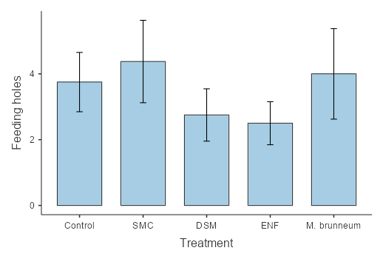
Figure 6. WIreworm Feeding holes per potato tuber by soil amendment. Soil amendments were an untreated control, spent mushroom compost (SMC), defatted mustard seed meal (DSM), black soldier fly frass (ENF), and M. brunneum. Error bars denote standard error of each mean.
Image
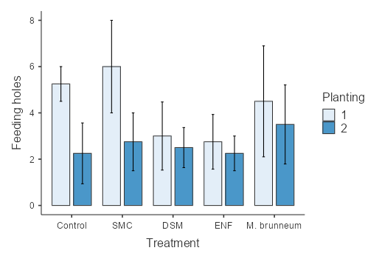
Figure 7. Wireworm feeding holes per potato tuber by soil amendment and planting date. Soil amendments were an untreated control, spent mushroom compost (SMC), defatted mustard seed meal (DSM), black soldier fly frass (ENF), and M. brunneum. Planting dates were 1) July 9, reseeded August 6; and 2) August 20. Turnips were harvested on October 11. Error bars denote standard error of each mean.
Conclusion
In contrast to some previous studies, none of the treatments tested in this study reduced wireworm damage to turnips.
Acknowledgments
Thanks to Michael Bomford, Rebecca Harbut, Andy Smith, Daniel Garfinkel, Todd Kabaluk (AAFC), Connor Entz (Enterra), and Azam Nikzad (Highline Mushrooms). Funding from Organic Science Cluster III.
Image

Image

Image
